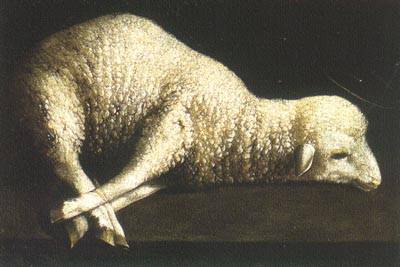
In Bach's own time his Passions formed a part of ritualised religious worship, with the active participation of church congregations through their singing of the chorales and reflective meditation. In our secularised world these works have survived largely through the rituals of the concert hall, with audiences sitting silently in rows of 'pews', watching (or not) the performers. Dramatic visual elements have been virtually banished from these puritanical spaces.Staged by Deborah Warner and brought into the opera house, ENO's St John Passion can be seen as a milestone in presenting this account of Christ's betrayal and crucifixion, with visual representation of its drama taking it outside the usual constraints of liturgical music. Her production in English, as is ENO's usual practice for more direct communication, can be seen as an attempt to present this acknowledged masterpiece as a musical spectacle for the wider British opera audience, with a limited amount of participatory singing simulating a form of popular worship. It enlists theatricality in an attempt to deepen audience responses.
St John's Gospel is a harrowing story about the victimised 'outsider', about power, betrayal, judicial torture and murder, endurance, love and compassion, loyalty and hope. Its mythic quality has ensured its survival for almost 2000 years. Through identification, it has deep echoes to ever recurring experiences of people being caught unfairly in power plays beyond their control. The triumph, albeit in another realm, is a powerful symbol of courage and hope.
On the whole, the staging of this emotive subject was judicious and tasteful. The crucifixion was presented with admirable restraint, three large single upright wooden planks standing for crosses. Christ took his place at the foot of the central one as the willing victim with a higher purpose.
However, it is perhaps more difficult to transfer the kind of naked emotionalism we see in medieval or Renaissance paintings. The lingering shots of dripping blood on the face of Christ, projected onto the stage-spanning backcloth, bordered on the kitchy.
More subtle is the use of lighting. While the ENO Chorus, dressed as ordinary citizens of today, sang the opening chorus, a myriad of dimly lit and fading light bulbs slowly descend, in increasing numbers, like a silent curtain of tears. This moving visual metaphor, along with the reflective, slowly pacing crowd, sets the mood for this sad and gripping story. When those tear drops retract they became brightly lit stars of hope, before fading and vanishing, to descend again later as tears for mourning Christ's death.
The graveyard scene was presented with moving simplicity. The mourners slowly and ritualistically laid flowers all over the stage, every now and then bending to read the labels. At the end, a living lamb, symbol of both sacrifice and renewal of life, was carried onto the burial scene. The predictably unpredictable baa sounds inserted an element of disorganised real life into this structured drama. It provided an emotional release with healthy peals of laughter and brought us back into the mundane every-day.With this production ENO has achieved a moving pathos, enriched by a touch of endearing vulgarity, and given this work a lease of life in the popular domain. Some purists may have been offended by this rendering; it is not the first time that the shock of the new has provoked adverse comment. According to the handsomely produced program, a Christian Gerber reported in 1732 that "when this theatrical music began, all these people were thrown into the greatest bewilderment, looked at each other, and said God save us, my children! It's just as if one were at an Opera Comedy".
Musically there was much to admire, but its presentation under the direction of Stephen Layton was controversial. The amateur choirs, standing throughout, crammed into the boxes on either side of the stage, sang the chorales well, but did not inspire more than a few members of the audience to join in, as had been intended - an audience rehearsal, as often done for some of Britten's pieces, might have helped? The lusty large, professional ENO chorus, belting out their contributions raucously as if in early Verdi, was a huge stumbling block. They continually overwhelmed the by a reduced ENO orchestra, playing mainly modern instruments, but with a few baroque instruments included to accompany the arias, which went far better. These were uniformly well sung. Catherine Wyn-Rogers and Barry Banks were particularly notable; Mark Padmore's Evangelist was magnificent, his voice somehow freed by involvement in the stage action, and sounding even better than when admired recently in Zurich.
Alexa & Peter Woolf

 Return to:
Return to: